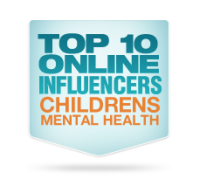 Thank you so much for stopping by to read this article, which is the ninth in an ongoing series from Jolene Philo about PTSD in children. This post reviews several therapies that have proven highly effective in treating children who have experienced significant trauma or have been diagnosed with PTSD. As was mentioned in the third article in this series, one misconception about PTSD in children impacted by trauma is that they are damaged for life. In the past few years the creation of effective treatment methods has made that attitude less prevalent.
Thank you so much for stopping by to read this article, which is the ninth in an ongoing series from Jolene Philo about PTSD in children. This post reviews several therapies that have proven highly effective in treating children who have experienced significant trauma or have been diagnosed with PTSD. As was mentioned in the third article in this series, one misconception about PTSD in children impacted by trauma is that they are damaged for life. In the past few years the creation of effective treatment methods has made that attitude less prevalent.
Treatment for PTSD in Very Young Children
Research done between 2000 and 2010 found that very young children who experience significant trauma may not suffer lasting effects if they receive immediate support from a trusted primary caregiver. Effective support contains 3 major elements. First, the primary caregiver must let the child know he or she believes the event was scary. Cuddling a child and saying, “That was so scary when the air bag popped out!” or “Your leg hurt when the nurse gave you that shot!” offers physical comfort and security and acknowledges the child’s experience. Second, caregivers must be patient after the initial validation. A young child needs reassurance over a long period of time. Caregivers need to allow time for babies and very young children to recover. Finally, caregivers who were traumatized along with their children must manage their own emotions. Doing so may be as simple as talking to a friend about their emotions or going for a walk. Or it may require seeking professional help.
Effective Trauma Treatments for PTSD in Children and Teens
Trauma-focused cognitive behavioral therapy (TF-CBT). The trauma-focused branch of cognitive behavioral therapy (TF-CBT) is amassing a body of research record about treating preschool-aged children through adolescents. This therapy is done by a trained clinician who talks to a child about traumatic experiences and monitors the child’s responses to determine the time and pace of therapy. The prevention of future trauma, developing resiliency in kids, and training parents to be agents of change are part of this therapy model. For children who are preverbal or nonverbal, parents are trained in trauma prevention and behavior management. Because this therapy is talk-based, it works best for children who were verbal at the time of the trauma.
Eye movement desensitization and reprocessing (EMDR). This therapy began in 1987 and research has shown EMDR to be an effective treatment intervention for adults with PTSD. At this time, there are no study results about EMDR effectiveness in children. However, research is ongoing. Many trained therapists also use EMDR in with children as young as three, often in conjunction with play therapy. But it is more effective with elementary-aged kids and teens and should be done by EMDR therapists who have trauma-specific training in addition to EMDR training.
Intensive Trauma Therapy (ITT). Intensive Trauma Therapy was developed by two psychiatrists at West Virginia University in the early 1990s. Currently, the intensive adult outpatient treatment in Morgantown, West Virginia lasts six hours a day for one or two weeks. Treatment consists of art therapy, guided imagery or hypnosis, externalized dialogue, and individual psychotherapy to process the trauma and bring closure. ITT also uses a modified version of this therapy model with children. Puppets and play therapy help the younger children act out what happened and come to closure. Elementary-aged children use puppets, too, but they are also encouraged to draw and use a video camera to record themselves.To learn more about ITT visit their website at www.traumatherapy.us.
Somatic Experiencing (SETM). Dr. Peter Levine, a medical biophysicist with a doctorate in psychology, created the Somatic Experiencing® model while studying stress and trauma for over forty-five years. SETM allows trauma responses that get stuck in the freeze state to become unstuck so the survival energy trapped in the body is released. Dr. Levine and Maggie Kline explain how to use their methods in their book for parents, Trauma-Proofing Your Kids. Information about Somatic Experiencing® treatment methods, research studies, professional training, and how to locate trained therapists can be found at www.traumahealing.com.
As was mentioned earlier, new treatments are constantly being developed and research about their effectiveness is ongoing. Therefore the therapies listed above are just a sampling of what’s available. Parents should consult with mental health professionals to stay abreast of innovations in the field.
Does Effective Treatment for PTSD in Children Mean a Total Cure?
Trauma treatment is not a miracle cure. The earlier children with PTSD are treated, the better. Early treatment means less likelihood of complications from multiple untreated traumas, less time for inappropriate trauma response behaviors to become ingrained habits, and less likelihood of other mental conditions arising from untreated traumas. Though early treatment is best, it is never too late to seek treatment.
Also, as life-changing as treatment can be, our kids deserve more than effective treatment. They need the opportunity to grow up in a world where childhood trauma is prevented whenever possible. The next article in this series will describe preventative methods adults can use to prevent trauma in the children in their care.
***********************************************************************************************************
 Does My Child Have PTSD? is designed for readers looking for answers about the puzzling, disturbing behaviors of childen in their care. With years of research and personal expererience, Jolene Philo provides critical information to help people understand causes, symptoms, prevention, and effective diagnosis, treatment, and care for any child struggling with PTSD. Available for order at Amazon.
Does My Child Have PTSD? is designed for readers looking for answers about the puzzling, disturbing behaviors of childen in their care. With years of research and personal expererience, Jolene Philo provides critical information to help people understand causes, symptoms, prevention, and effective diagnosis, treatment, and care for any child struggling with PTSD. Available for order at Amazon.




